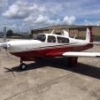Max Zero Fuel Weight in a Mooney?
-
Members Online
- kasm
- Sue Bon
- redbaron1982
- TCC
- SKI
- 81X
- DXB
- 1980Mooney
- Hector
- BrettD
- Danb
- 00-Negative
- takair
- blaine beaven
- wolfbyte
- Peter T
- Brian2034
- acekng1
- philiplane
- EricJ
- caa0428
- 65MooneyPilot
- Hank
- Old Chub
- 1967 427
- Brian Crafford
- Skyland
- LANCECASPER
- A64Pilot
- dzeleski
- ta2too
- korbike
- Glen S.
- AndreiC
- Parker_Woodruff
- Thedude
- Rmnpilot


Recommended Posts
Join the conversation
You can post now and register later. If you have an account, sign in now to post with your account.